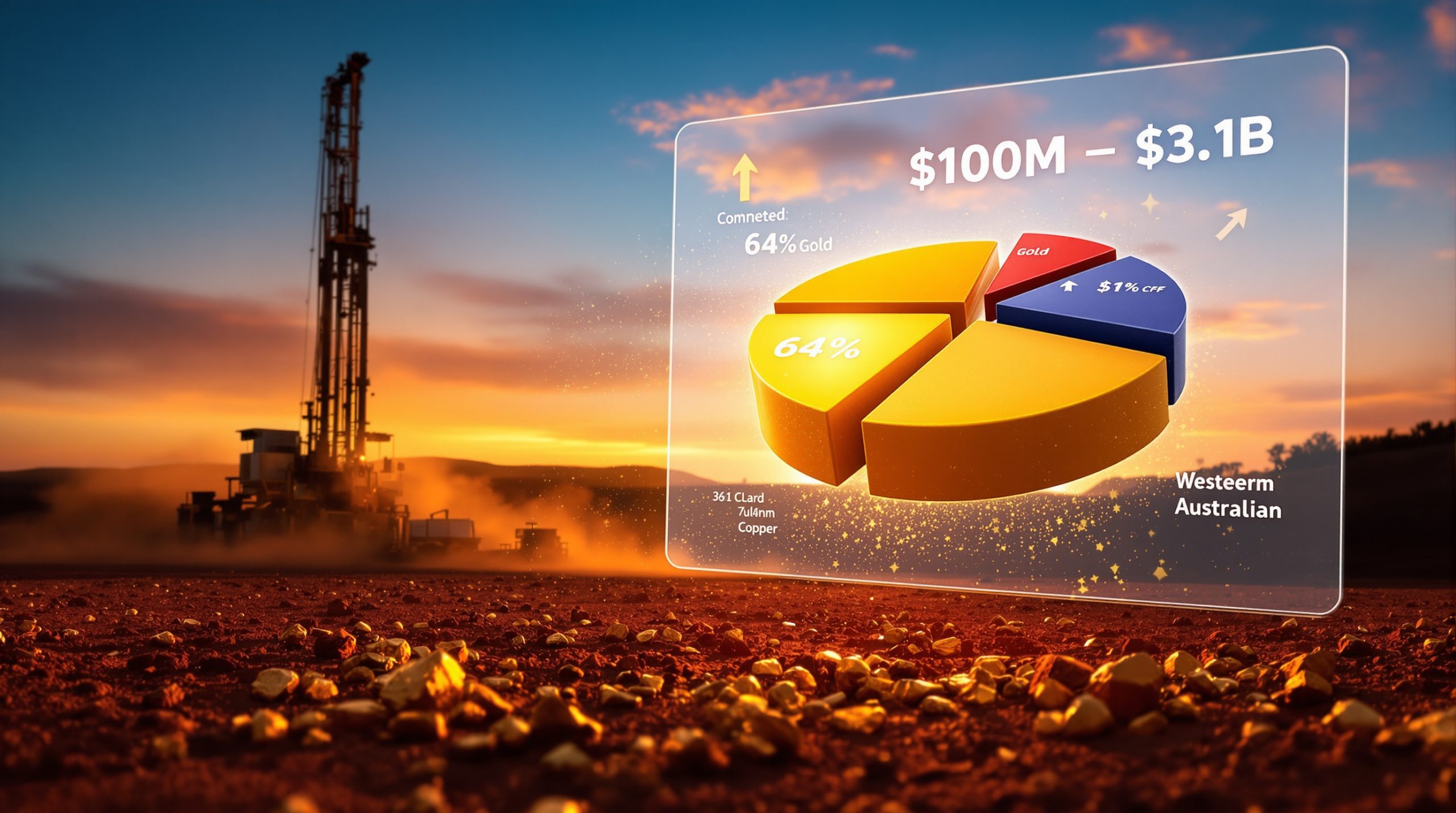What Are Gold Bullion Bars and Why Are They Important?
Gold bullion bars represent standardized units of refined gold manufactured to precise specifications of weight, dimensions, and purity. These tangible assets range dramatically in size, from pocket-sized 1-gram pieces to the massive 400-ounce (12.5 kg) bars typically held in central bank vaults. Investment-grade bullion bars contain between 99.5% and 99.99% pure gold, with each bar carrying specific markings that indicate its weight, purity level, manufacturer, and a unique serial number for authentication and tracking.
Unlike decorative gold items, bullion bars are valued almost exclusively for their gold content rather than craftsmanship. This standardization makes them ideal vehicles for investment and wealth preservation, as their value directly correlates with the gold prices analysis.
Definition and Characteristics of Gold Bullion Bars
The hallmark of authentic gold bullion bars is their standardization and certification. Reputable manufacturers adhere to strict production protocols ensuring each bar meets internationally recognized standards. The most widely accepted standard comes from the London Bullion Market Association (LBMA), which establishes the criteria for "good delivery" bars accepted in major trading centers worldwide.
Physical characteristics of gold bullion bars include:
- Purity levels: Typically 99.5% (24 karat) or higher
- Weight precision: Measured to at least 0.01 grams
- Surface finish: Usually matte or semi-gloss
- Stamped markings: Weight, purity, refiner's mark, serial number
- Security features: Some include holographic elements or micro-engraving
These exacting standards ensure that gold bullion bars maintain their liquidity and tradability across international markets.
Global Economic Significance
Gold bullion serves as a cornerstone of the global financial system, providing a unique combination of wealth preservation, liquidity, and security that few other assets can match. Central banks worldwide hold approximately 35,000 metric tons of gold in their reserves, representing about one-fifth of all gold ever mined.
This precious metal has transcended its decorative origins to become a vital financial instrument for several reasons:
- Portfolio diversification: Gold typically moves independently of stock and bond markets
- Inflation hedge: Historical performance during inflationary periods
- Currency debasement protection: Cannot be printed or digitally created
- Crisis insurance: Tends to maintain or increase value during economic turmoil
The international gold market operates continuously, with trading moving from Asian markets to European and then North American exchanges throughout the 24-hour cycle. Major trading hubs in London, New York, Shanghai, and Zurich facilitate billions in daily transactions, with London alone handling approximately $30 billion in gold market surge each day.
How Did the US Tariff Confusion Begin?
In August 2025, the global gold market experienced significant turbulence following an unexpected announcement from U.S. Customs and Border Protection (CBP). The agency indicated that country-specific import tariffs might apply to no tariff on gold bullion bars entering the United States, creating immediate uncertainty in precious metals markets worldwide.
This announcement represented a potential dramatic shift in longstanding U.S. policy toward gold imports, which have historically enjoyed special status separate from conventional commodities.
Initial Customs and Border Protection Statement
The CBP statement, which appeared in an update to import guidelines, suggested that gold bullion bars could fall under new tariff schedules based on country of origin. This interpretation contradicted decades of precedent treating gold bullion as a monetary asset rather than a conventional commodity subject to trade restrictions.
Market participants were caught off guard, as the statement:
- Lacked specific implementation dates
- Provided no guidance on applicable tariff rates
- Failed to clarify whether existing bullion inventories would be affected
- Offered no explanation for the policy shift
This communication vacuum amplified market anxiety, as traders and investors struggled to assess potential impacts on international gold flows.
Market Response to Potential Tariffs
The market reaction was swift, though tempered by uncertainty about whether the guidance represented official policy or a misinterpretation. In the days following the announcement:
- Gold futures experienced heightened volatility
- Premiums for physical gold in the U.S. temporarily increased
- Refiners and dealers reported a surge in inquiries about shipment timing
- Financial analysts issued cautionary notes about potential supply chain disruptions
The global nature of gold markets meant that even this brief period of policy uncertainty rippled through international trading desks, affecting pricing and temporarily distorting normal market operations.
Reuters reported that such tariffs would have particularly harmed Switzerland, which serves as both a major gold refining center and a transit hub for bullion moving between mining regions and end markets. Swiss refineries are renowned for converting mining output and recycled gold into investment-grade products that meet international standards.
Why Did President Trump Clarify the Tariff Status?
Following days of market uncertainty and growing concern within the precious metals industry, President Donald Trump intervened directly to resolve the confusion. His declaration that "Gold will not be Tariffed!" provided the definitive policy clarification that market participants had been seeking.
Presidential Intervention
President Trump's intervention came through his preferred communication channel—social media—where he issued the unambiguous statement addressing the situation. As reported by Mining Weekly on August 22, 2025, the President "responded days later on social media as follows: 'Gold will not be Tariffed!'"
This direct approach bypassed the normal channels of policy clarification, such as formal Treasury Department guidance or CBP revisions, in favor of an immediate, definitive statement from the highest level of government. The intervention demonstrated the administration's recognition of:
- The strategic importance of gold in global financial markets
- The potential economic implications of disrupting international gold flows
- The special status gold has historically maintained in U.S. trade policy
The market response to this clarification was immediate, with breaking record gold prices stabilizing and uncertainty about cross-border shipments dissipating.
Strategic Considerations Behind the Decision
The decision to exempt gold bullion from tariffs aligns with several strategic considerations that distinguish gold from conventional imported goods:
- Monetary asset status: Gold functions as a quasi-monetary asset in the global financial system, with central banks worldwide holding it as a reserve asset
- Financial market stability: Disrupting gold flows could have unpredictable effects on broader financial markets
- Regulatory consistency: Maintaining gold's special status preserves consistency with other regulatory frameworks that treat gold differently from industrial commodities
- Limited manufacturing impact: Unlike industrial goods, gold bullion imports don't directly compete with domestic manufacturing
Additionally, imposing tariffs on gold would have created complex enforcement challenges. Gold is highly fungible, with limited ability to track its ultimate origin once it has been refined to investment-grade purity. This characteristic makes country-specific tariffs particularly difficult to implement effectively.
Which Countries Would Have Been Most Affected by Gold Tariffs?
The proposed tariffs would have significantly disrupted global gold supply chains, with certain countries bearing a disproportionate impact due to their specialized roles in the international gold market. While gold is mined in dozens of countries, its refining and distribution are highly concentrated.
Switzerland's Critical Role in Global Gold Trade
Switzerland stands at the epicenter of the global gold refining industry, with the country processing approximately 70% of the world's annual gold production. This extraordinary concentration makes Switzerland uniquely vulnerable to any policy changes affecting gold imports into major markets like the United States.
Swiss dominance in gold refining stems from several factors:
- Historical expertise: Centuries of specialized knowledge in precious metals processing
- Strategic location: Central European position between mining regions and consumption markets
- Political stability: Long history of neutrality and protection of property rights
- Advanced infrastructure: Sophisticated security, transportation, and financial systems
- Regulatory environment: Well-developed legal framework for precious metals
The country hosts several of the world's most prestigious gold refineries, including facilities that transform raw mining output into the standardized bars that trade in international markets. These refineries convert gold of various purities into the 99.99% pure bars preferred for investment purposes.
As Reuters noted in reporting cited by Mining Weekly, tariffs would have been "especially harmful for Switzerland," potentially disrupting not just Swiss-American trade but the entire global gold ecosystem.
Other Major Gold Trading Partners
Beyond Switzerland, several other countries play vital roles in the U.S. gold supply chain and would have faced significant disruption from potential tariffs:
-
Canada: A major gold producer with significant mining operations and refining capacity, Canada exports substantial quantities of gold to the United States under normal trade conditions.
-
Australia: As one of the world's largest gold producers, Australian mining companies rely on unfettered access to international markets, including the United States.
-
United Kingdom: London serves as the world's primary gold trading hub, with the twice-daily LBMA Gold Price auction setting the benchmark price used worldwide. Physical gold frequently moves between London vaults and U.S. destinations.
-
South Africa: Historically one of the world's most important gold producers, South African mining companies remain significant participants in the global gold supply chain.
The interconnected nature of the global gold market means that tariffs targeting specific countries would likely have triggered complex reshuffling of trade flows, potentially creating market inefficiencies without achieving meaningful trade policy objectives.
What Makes Gold Different from Other Commodities in Trade Policy?
Gold occupies a unique position in international trade and finance that distinguishes it from conventional commodities. This special status has historically influenced how governments approach gold in trade policy decisions, including tariff considerations.
Gold's Dual Nature as Commodity and Monetary Asset
Unlike purely industrial commodities such as copper, aluminum, or agricultural products, gold serves dual roles in the global economy:
- Physical commodity: Tangible asset with industrial and decorative applications
- Monetary asset: De facto financial instrument used by central banks and investors
This dual nature creates regulatory complexity, as gold simultaneously falls under:
- Commodity regulations governing physical goods
- Financial regulations concerning monetary instruments
- Banking regulations regarding reserve assets
Central banks worldwide hold approximately 35,000 metric tons of gold in their official reserves, treating these holdings as strategic financial assets rather than industrial inputs. This monetary dimension fundamentally distinguishes gold from other metals and commodities typically subject to trade restrictions.
The Basel III international banking regulations recognize gold's special status by classifying physical gold as a Tier 1 asset—the highest quality category—allowing banks to count allocated gold holdings at 100% of their value for regulatory capital purposes.
Historical Precedents for Gold's Special Status
Throughout modern economic history, gold has received exceptional treatment in international trade frameworks:
- Gold standard era (pre-1971): Gold served as the foundation of the international monetary system, with currencies valued in terms of gold
- Post-Bretton Woods period: Even after the end of the gold standard, gold maintained special status in international settlements
- Central bank agreements: Coordinated agreements among central banks regarding gold sales demonstrate ongoing special treatment
- Regulatory classifications: Consistent differentiation between gold and industrial commodities in regulatory frameworks
The U.S. tax code further reinforces gold's unique position by classifying certain gold investments differently from other commodities. Investment-grade gold coins issued by the U.S. Mint, for instance, are considered legal tender rather than mere commodities.
These historical and current distinctions provide strong precedent for exempting no tariff on gold bullion bars from tariffs typically applied to industrial imports, aligning with President Trump's definitive clarification that "Gold will not be Tariffed!"
How Do Gold Tariffs Affect International Trade Relations?
The prospect of imposing tariffs on gold bullion raises complex diplomatic and trade policy considerations that extend well beyond the immediate economic impact on precious metals markets. Gold's global significance means that policy changes affecting its movement can have far-reaching diplomatic implications.
Potential Diplomatic Implications
Imposing tariffs on gold bullion would likely strain diplomatic relations, particularly with countries heavily involved in the global gold ecosystem. These tensions would arise from several factors:
- Financial services targeting: Countries like Switzerland would perceive gold tariffs as directly targeting their specialized financial services sector
- Monetary policy interference: Gold tariffs could be interpreted as an attempt to influence international monetary relationships
- Historical precedent violation: Breaking the longstanding tradition of free gold movement would signal a significant policy shift
- Market disruption concerns: Affected countries would likely protest the destabilizing effect on established market practices
Switzerland, as the world's premier gold refining hub, would likely view gold tariffs as a direct challenge to one of its key economic sectors. This perception could complicate bilateral relations beyond just the gold market, potentially affecting cooperation in other areas from banking regulation to broader trade negotiations.
Other major gold trading partners might also reassess aspects of their economic relationship with the United States, viewing gold tariffs as a concerning precedent that could extend to other financial instruments or services.
World Trade Organization Considerations
Gold tariffs would raise complex questions under World Trade Organization (WTO) frameworks, potentially leading to formal disputes:
- Classification challenges: The dual nature of gold as both commodity and monetary asset creates classification ambiguities under WTO rules
- Most-favored-nation requirements: Country-specific gold tariffs might violate non-discrimination principles
- Financial services agreements: Restrictions on gold movement could potentially conflict with financial services commitments
- Proportionality questions: Affected countries could challenge whether such measures are proportionate to stated policy objectives
WTO dispute resolution processes typically unfold over extended periods, creating prolonged uncertainty for market participants. Even if ultimately successful in challenging gold tariffs, affected countries would face interim market disruptions while disputes work through the system.
The unique nature of gold in international trade means that WTO precedents regarding conventional commodities might not apply cleanly, creating additional legal complexity and uncertainty.
By definitively exempting gold from tariffs, President Trump's clarification avoided these potential diplomatic complications while maintaining the established international framework for gold trading.
What Are the Economic Benefits of Keeping Gold Tariff-Free?
Maintaining gold's tariff-exempt status preserves significant economic benefits for market participants, investors, and the broader financial system. These advantages extend beyond just avoiding potential negative consequences of tariffs.
Maintaining Market Liquidity and Efficiency
The tariff exemption for gold bullion preserves the high liquidity and efficiency that characterize global gold markets:
- Price discovery efficiency: Unimpeded cross-border flows allow for more accurate and responsive price formation
- Transaction cost minimization: Absence of tariffs keeps trading spreads narrow and execution costs low
- Arbitrage function: Free movement enables market participants to quickly eliminate price discrepancies between regions
- Inventory optimization: Bullion can flow to where it's most needed without artificial barriers
These efficiency benefits extend to gold-backed financial instruments such as ETFs, futures contracts, and allocated storage programs. These products rely on the seamless movement of physical gold between jurisdictions to maintain proper functioning and accurate pricing.
The global nature of gold trading means that maintaining consistent, tariff-free treatment across major markets supports overall market health. When gold can move freely between London, New York, Zurich, Singapore, and other trading hubs, all participants benefit from deeper liquidity and more reliable price signals.
Supporting Investment and Wealth Preservation
For individual and institutional investors, gold's tariff-exempt status preserves its effectiveness as a portfolio diversification tool and wealth preservation asset:
- Accessible inflation hedge: Investors can acquire physical gold without tariff-induced price distortions
- Portfolio insurance: Gold's role as a crisis hedge remains uncompromised by trade restrictions
- Global asset allocation: International investors can adjust gold holdings across jurisdictions based on investment strategy rather than tariff considerations
- Retirement portfolio diversification: Individual retirement accounts that hold physical gold benefit from consistent valuation treatment
During periods of economic uncertainty, the demand for physical gold often increases as investors seek tangible assets outside the traditional financial system. Tariff-free treatment ensures this "safe haven" function remains accessible and efficiently priced, supporting financial resilience for investors across the economic spectrum.
The clarification that "Gold will not be Tariffed!" preserves these benefits, maintaining gold's traditional role in investment portfolios and gold as inflation hedge strategies without introducing artificial market distortions.
How Does the Gold Market Function Internationally?
The global gold market operates through a sophisticated network of interconnected trading centers, specialized participants, and established procedures that facilitate the movement of both physical gold and gold-backed financial instruments.
Major Trading Hubs and Market Structure
The international gold market functions through several key trading centers, each with specialized roles:
-
London: Serves as the primary global gold trading hub, with the twice-daily LBMA Gold Price auction establishing the benchmark price used worldwide. London vaults hold approximately 8,000 tonnes of gold worth over $400 billion.
-
New York: Home to COMEX gold futures trading, which provides price discovery and risk management tools. The COMEX warehouse system holds significant physical gold backing these contracts.
-
Shanghai: The Shanghai Gold Exchange represents China's growing influence in gold markets, with physical delivery requirements distinguishing it from Western trading centers.
-
Zurich: Functions as a major physical gold storage and trading center, with deep connections to Swiss refining operations.
-
Singapore: Emerging as an important Asian gold hub, with tax policies favorable to precious metals trading and storage.
These centers operate in a complementary fashion, with price relationships maintained through arbitrage activities that quickly eliminate significant discrepancies. The 24-hour nature of gold trading allows for continuous market activity as trading moves between Asian, European, and American business hours.
The London Bullion Market Association (LBMA) establishes the internationally recognized standards for "good delivery" gold bars, ensuring consistency in quality and specifications for bars traded in professional markets.
Refining and Distribution Networks
Physical gold moves through a specialized infrastructure that transforms mining output into investment-grade products:
-
Mining production: Gold is extracted from mines across dozens of countries, with China, Australia, Russia, and the United States among the largest producers.
-
Refining processes: Raw gold undergoes sophisticated refining to achieve investment-grade purity, with Swiss refineries processing approximately 70% of annual production.
-
Secure logistics: Specialized security firms transport gold between mines, refineries, vaults, and end users through established secure channels.
-
Vault storage: Professional vaulting facilities in major financial centers provide secure storage, with most institutional gold held in allocated accounts specifying exact bars owned.
-
Retail distribution: Smaller bars and coins move through networks of dealers and distributors to reach individual investors.
This physical infrastructure operates alongside sophisticated financial markets that include spot trading, futures contracts, options, ETFs, and other gold-linked instruments. The interaction between physical and paper markets creates a comprehensive ecosystem that serves participants ranging from central banks to individual investors.
The tariff exemption for gold bullion helps maintain the efficient functioning of this global system by allowing physical gold to move freely to where it's most needed or valued.
What Are the Future Implications for Gold Trade Policy?
While gold bullion currently enjoys tariff-exempt status following President Trump's clarification, the evolving regulatory landscape and technological developments may shape future approaches to gold in trade policy.
Evolving Regulatory Landscape
Several regulatory trends may influence how governments approach gold in future trade and financial policies:
-
Anti-money laundering focus: Increasing scrutiny of high-value transactions affects gold trading, with requirements for enhanced due diligence, know-your-customer procedures, and suspicious activity reporting.
-
Responsible sourcing initiatives: Growing emphasis on ethical supply chains has led to programs like the LBMA's Responsible Gold Guidance, which requires refiners to demonstrate gold is conflict-free and ethically sourced.
-
Environmental considerations: Mining practices face intensifying environmental scrutiny, potentially affecting how governments view gold from different origins.
-
Tax information exchange: Global initiatives for automatic exchange of tax information increasingly capture significant gold holdings and transactions, reducing historical privacy advantages.
-
Central bank policy coordination: Formal and informal agreements among central banks regarding gold reserves may influence broader policy approaches to gold markets.
These regulatory developments suggest that while tariffs may not apply to gold bullion, other forms of oversight and compliance requirements will likely continue to evolve, potentially creating different types of cross-border considerations.
Digital Gold and New Trading Mechanisms
Technological innovation is transforming how gold ownership is recorded and transferred, potentially creating new considerations for trade policy:
-
Blockchain-based ownership records: Distributed ledger technologies enable new forms of gold ownership certification that may eventually influence regulatory approaches.
-
Tokenization initiatives: Projects converting physical gold into digital tokens traded on various platforms challenge traditional classifications of gold as either physical commodity or financial instrument.
-
Central bank digital currencies: As central banks explore digital currencies, some may incorporate gold backing or references, potentially creating new regulatory categories.
-
Trading platform evolution: Electronic trading systems continue to evolve, with potential impacts on market structure, price discovery, and regulatory oversight.
-
Fractional ownership models: Technology enabling smaller minimum investments may broaden gold ownership, potentially influencing how policymakers view gold's role in financial markets.
These innovations suggest that future trade policy regarding gold may need to address not just the physical metal but also various digital representations and derivatives. The distinction between gold as commodity and monetary asset may become even more complex as technology continues to transform how gold is owned and traded.
The clarification that "Gold will not be Tariffed!" provides immediate certainty, but longer-term policy approaches may need to evolve alongside these regulatory and technological developments.
As analysts continue to monitor market conditions, many have updated their gold price forecast to reflect the reduced uncertainty following the tariff exemption clarification.
FAQs About Gold Bullion Tariffs
Are Gold Coins Subject to the Same Tariff Exemptions as Bullion Bars?
Yes, investment-grade gold coins typically receive the same tariff treatment as gold bullion bars. Both products are valued primarily for their gold content rather than their manufacturing characteristics. This includes:
- Official government mint coins like American Gold Eagles, Canadian Maple Leafs, and South African Krugerrands
- Historic gold coins valued primarily for gold content rather than numismatic premium
- Gold rounds produced by private mints to bullion specifications
However, collector coins with significant numismatic value above their gold content may face different import classifications. When a coin's value substantially exceeds its gold content due to rarity, historical significance, or collector demand, it may be classified as a collectible rather than bullion, potentially subjecting it to different import regulations.
The key determinant is whether the item's value is primarily derived from its gold content or from other factors such as artistic merit, historical significance, or collectible status.
How Do Gold Tariffs Differ from Other Precious Metal Regulations?
While gold enjoys special status in trade policy, other precious metals face varying regulatory treatments:
-
Silver: Though sometimes considered a monetary metal, silver typically receives less exceptional treatment than gold in regulatory frameworks. Its substantial industrial applications often result in it being treated more like a conventional commodity.
-
Platinum and Palladium: These metals have significant industrial applications, particularly in automotive catalytic converters, which often results in them being treated primarily as industrial commodities rather than monetary assets.
-
Rhodium and Other Platinum Group Metals: These rare metals are almost exclusively industrial in nature and typically fall under standard commodity tariff schedules.
The Basel III international banking framework illustrates these distinctions: physical gold can qualify as a Tier 1 asset for banks under certain conditions, while other precious metals do not receive this preferential treatment, reflecting gold's unique status in the financial system.
What Documentation Is Required When Importing Gold Bullion?
While exempt from tariffs, gold bullion imports still require proper documentation to comply with customs procedures and anti-money laundering regulations:
- Customs declaration forms: Accurately stating the nature, origin, and value of the gold being imported
- Commercial invoices: Documenting the transaction details and parties involved
- Certificates of authenticity: Confirming the specifications, purity, and manufacturing details
- Proof of origin: Documentation showing where the gold was mined or refined
- Anti-money laundering compliance records: Evidence of due diligence regarding the source of funds and gold
For larger commercial shipments, additional requirements may include:
- Insurance documentation: Proof of adequate coverage for the shipment
- Shipping manifests: Detailed cargo information for transportation providers
- Security protocols: Documentation of chain of custody procedures
Individual investors bringing modest amounts of gold across borders should be aware that while gold may be tariff-exempt, they still must declare significant values and may face scrutiny under currency and monetary instrument reporting requirements.
Can Tariff Policies on Gold Change in the Future?
While the current administration has clearly stated that "Gold will not be Tariffed!", future policy changes remain possible under different circumstances:
- Administrative transitions: New administrations may revisit trade policies, potentially including gold's status
- Legislative changes: Congressional action could modify how gold is classified for import purposes
- International agreements: New trade agreements might include provisions affecting gold movement
- Economic emergencies: Severe financial crises have historically sometimes led to extraordinary measures regarding gold
Investors and industry participants should monitor several indicators that might signal potential policy reconsideration:
- Treasury Department studies or reports regarding gold's role in international finance
- Congressional hearings on topics related to gold imports or monetary policy
- International monetary system discussions at G7, G20, or IMF meetings
- Significant changes in how other major economies approach gold regulation
While gold's special status has deep historical roots and strong practical justifications, maintaining awareness of the policy environment remains prudent for those with significant gold investments or business activities.
Important Note: The gold market operates within complex international regulatory frameworks that continue to evolve. This information provides general guidance but should not be considered definitive legal or financial advice. Individuals and businesses should consult with qualified professionals regarding specific import activities or investment decisions related to no tariff on gold bullion bars.
Want to Get Ahead of the Next Major Mineral Discovery?
Discovery Alert's proprietary Discovery IQ model instantly identifies significant ASX mineral discoveries, providing real-time alerts that give you a crucial market advantage. Explore how historic discoveries have generated substantial returns by visiting the Discovery Alert discoveries page and position yourself for potential investment success.




